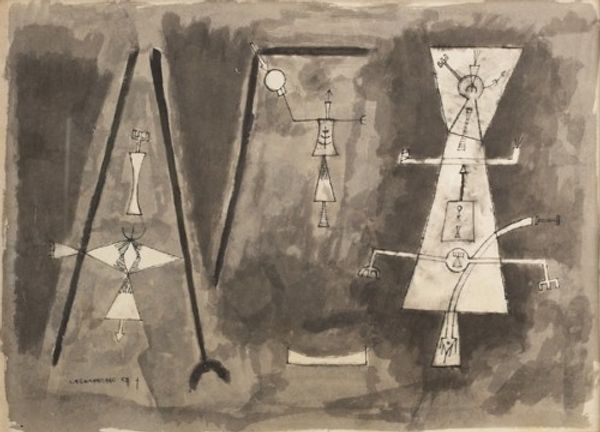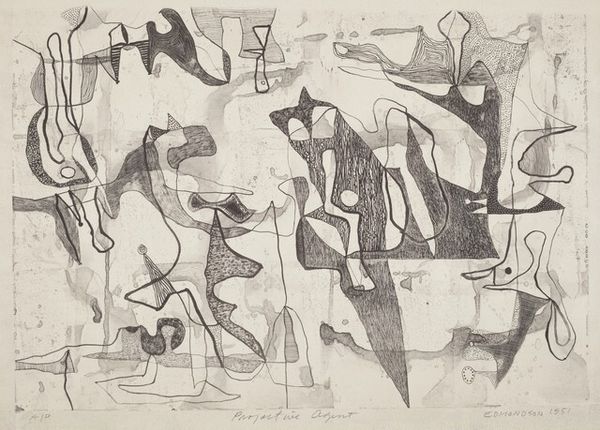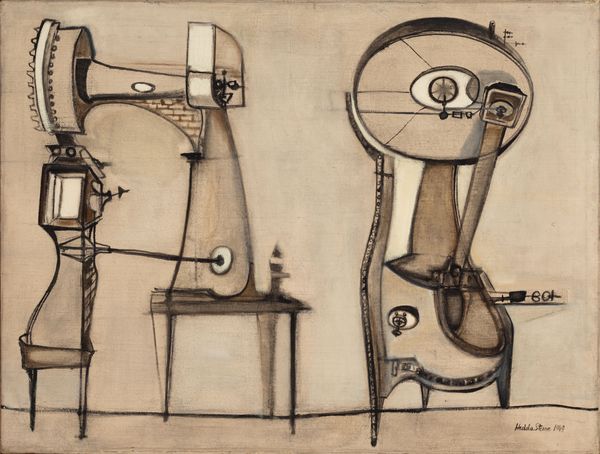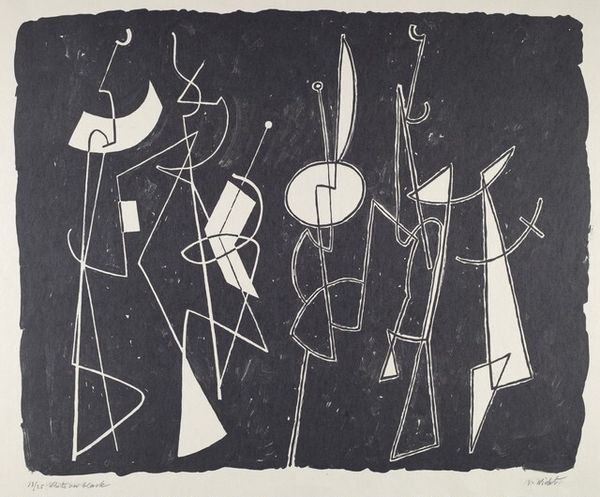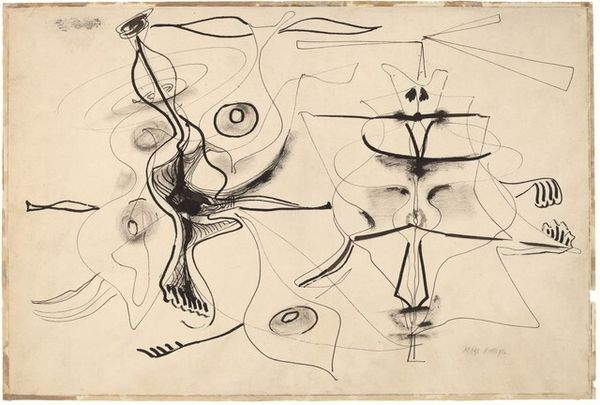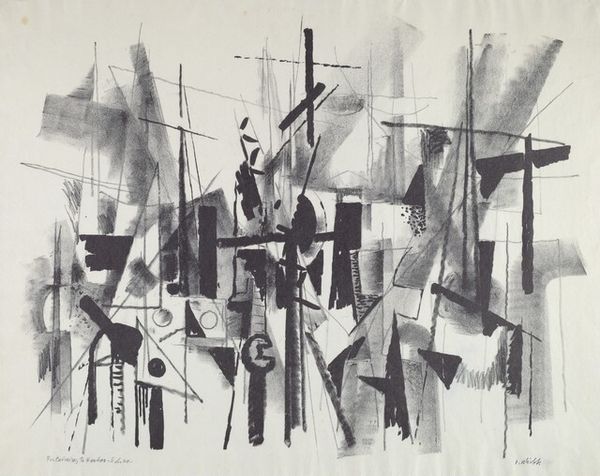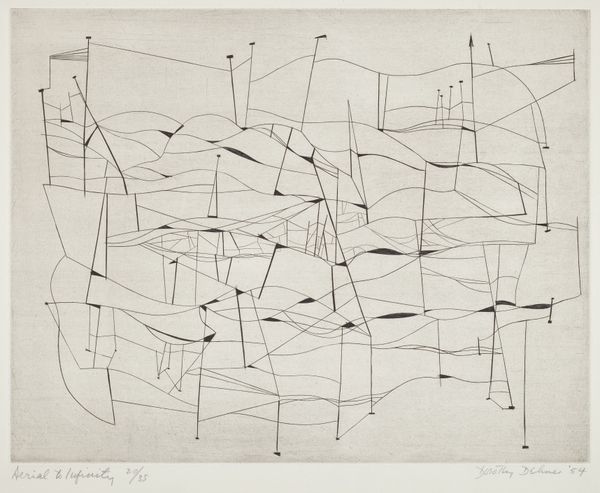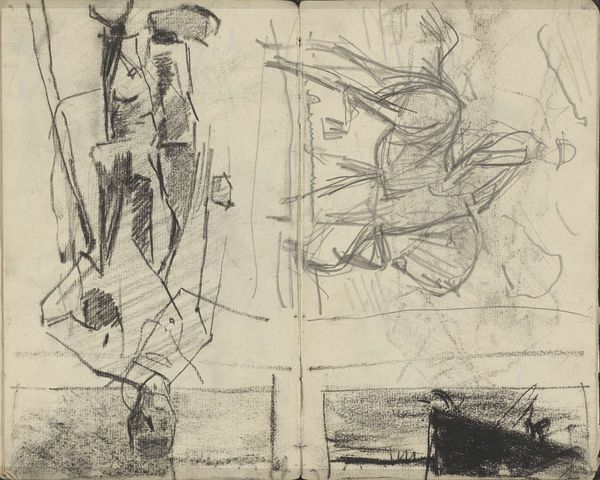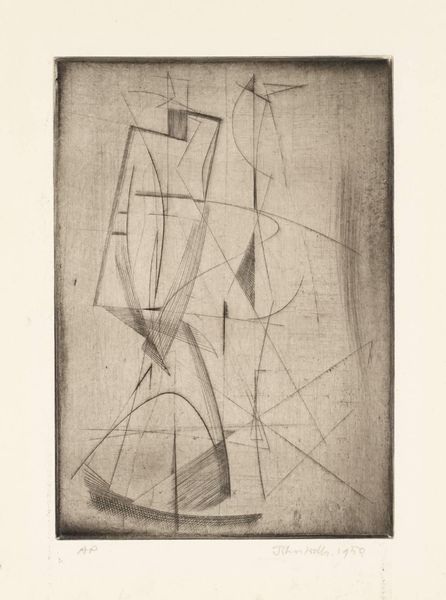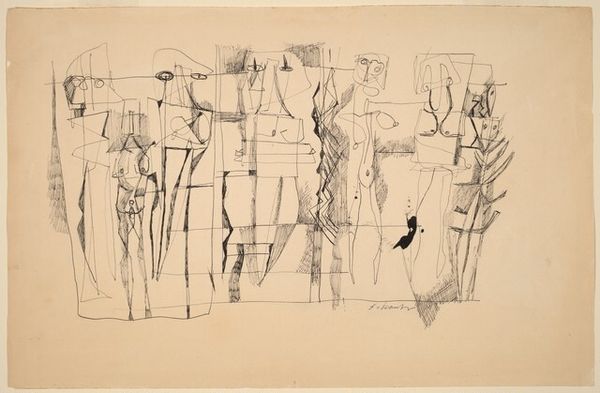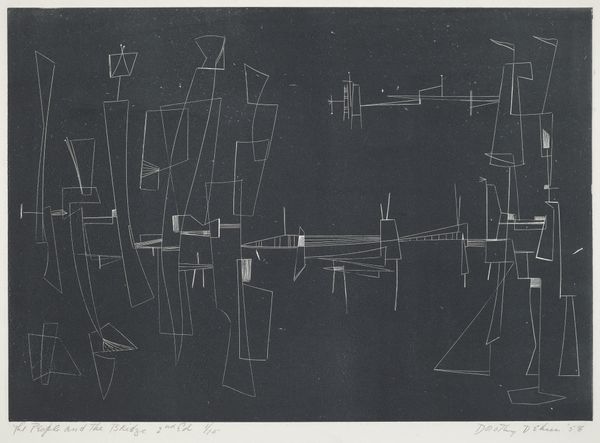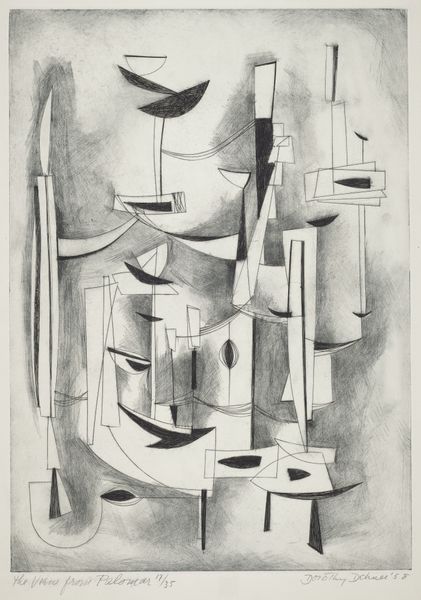
print, etching, graphite
# print
#
etching
#
landscape
#
figuration
#
geometric
#
abstraction
#
graphite
#
modernism
Dimensions: image: 22.54 × 30.32 cm (8 7/8 × 11 15/16 in.) sheet: 31.91 × 46.36 cm (12 9/16 × 18 1/4 in.)
Copyright: National Gallery of Art: CC0 1.0
Curator: We are looking at "Figures in Landscape," an etching and graphite print created in 1956 by Dorothy Dehner. Editor: There's a curious tension in this piece. I see angular forms rendered with delicate, almost hesitant lines, creating a dreamlike, unsettling atmosphere. Curator: Dehner was part of the burgeoning New York art scene after World War II, closely linked to Abstract Expressionism, but resistant to easy categorization. The "landscape," in her work, is often a psychological space reflecting personal turmoil. Editor: The figures, if we can call them that, seem more like abstracted totems or perhaps diagrammatic beings. How do their shapes interact, and what meaning is derived through these arrangements of shapes? Curator: Consider the broader historical context. Dehner navigated a male-dominated art world and a complex marriage to sculptor David Smith. Her exploration of abstraction, incorporating personal narratives, resonated with a generation grappling with identity and trauma in the postwar era. This print was made around when her husband's star was rising, and hers wasn't quite in the same orbit. Editor: Yes, these geometric forms project an inner reality. Take for instance that juxtaposition of vertical lines with soft washes and detailed accents. Each form plays a vital role in constructing meaning. Curator: You know, one interpretation I’ve often considered: is Dehner playing with our sense of perspective and expectations by invoking historical symbols like 'landscape' and 'figures', then undercutting them? Her modernist engagement asks us what public art means and does, then offers very private hints as the substance of an answer. Editor: An insightful analysis. I agree—there is more going on in this ostensibly simple composition than meets the eye. What strikes me is that the artist challenges the relationship of parts to the whole, producing unresolved tensions. Curator: Precisely! Dehner uses the public expectation of accessible themes to draw us into much more vulnerable territory, reflecting the zeitgeist of social reckoning and exploration through modern visual terms. Editor: Ultimately, the beauty of this piece lies in the visual and interpretive challenges it gives us. Curator: Indeed; Dehner compels us to reconsider how abstraction intersects with socio-political and individual stories, challenging the conventional roles assigned to art and female artists.
Comments
No comments
Be the first to comment and join the conversation on the ultimate creative platform.
